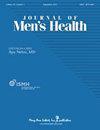What are the phases of change in exercise behaviors (EB), and factors affecting exercise behaviors (EB) of male workers in a workplace setting?
IF 0.6
4区 医学
Q4 Medicine
引用次数: 0
Abstract
The purpose of this study was to evaluate the phases of change of exercise among male workers and to analyze the factors affecting their EB using Information-Motivation-Behavioral skill-Revealed Related Variables (IMBR) model. The study included 163 male workers from a major Hyundai Transys company, Seosan city. Data were analyzed using Pearson’s correlation coefficients, and hierarchical regression etc. Regarding the phases of change in exercise, 135 individuals (82.8%) were classified into phase 3 (preparation phase), phase 4 (action phase), and phase 5 (maintenance phase). In the first step, factors such as health status (β = 0.26 , p < 0.001), smoking (β = 0.16, p= 0.005), number of exercises per week (β = 0.35, p < 0.001), times of each exercise (β = 0.17, p = 0.005), and phases of change in exercise (β = 0.17, p = 0.014) were identified as significant factors affecting EB. In the second step, health status (β = 0.19, p = 0.001), smoking (β = −0.13, p = 0.019), number of exercises per week (β = 0.31, p < 0.001), phases of change in exercise (β = 0.13, p = 0.034), and sport commitment (β = 0.16, p = 0.019) were identified as significant factors. In the third step, health status (β = 0.27, p < 0.001), number of exercises per week (β = 0.14, p = 0.005), and exercise self-efficacy (β = 0.39, p < 0.001) were identified as significant factors, explaining 68.3% of the variance in EB. To promote EB, it’s important to assess the phases of change in exercise and consider factors such as health status, smoking, the number of exercises per week and the duration of each exercise. Interventions that enhance sport commitment and exercise self-efficacy should be considered. It’s recommended to apply IMBR model in exercise studies for workers.职场男性员工运动行为的变化阶段及影响运动行为的因素有哪些?
本研究采用信息-动机-行为-技能显示相关变量(IMBR)模型,探讨男性工人运动习惯的变化阶段,并分析影响其运动习惯变化的因素。这项研究的对象是瑞山市现代transsys公司的163名男性员工。采用Pearson相关系数、层次回归等方法对数据进行分析。关于运动变化的阶段,135人(82.8%)被分为阶段3(准备阶段)、阶段4(行动阶段)和阶段5(维持阶段)。在第一步中,健康状况(β = 0.26, p <0.001)、吸烟(β = 0.16, p= 0.005)、每周锻炼次数(β = 0.35, p <0.001)、每次运动次数(β = 0.17, p = 0.005)和运动变化阶段(β = 0.17, p = 0.014)是影响EB的显著因素。在第二步中,健康状况(β = 0.19, p = 0.001),吸烟(β = - 0.13, p = 0.019),每周锻炼次数(β = 0.31, p <0.001)、运动变化阶段(β = 0.13, p = 0.034)和运动承诺(β = 0.16, p = 0.019)被认为是显著因素。第三步,健康状态(β = 0.27, p <0.001)、每周运动次数(β = 0.14, p = 0.005)和运动自我效能感(β = 0.39, p <0.001)被认为是显著因素,解释了68.3%的EB方差。为了促进EB,重要的是评估运动变化的阶段,并考虑健康状况、吸烟、每周运动的次数和每次运动的持续时间等因素。应考虑提高运动承诺和运动自我效能的干预措施。建议将IMBR模型应用于工人运动研究。
本文章由计算机程序翻译,如有差异,请以英文原文为准。
求助全文
约1分钟内获得全文
求助全文
来源期刊

Journal of Men's Health
Medicine-Urology
CiteScore
0.70
自引率
28.60%
发文量
153
审稿时长
10 weeks
期刊介绍:
JOMH is an international, peer-reviewed, open access journal. JOMH publishes cutting-edge advances in a wide range of diseases and conditions, including diagnostic procedures, therapeutic management strategies, and innovative clinical research in gender-based biology. It also addresses sexual disparities in health, life expectancy, lifestyle and behaviors and so on. Scientists are encouraged to publish their experimental, theoretical, and descriptive studies and observations in as much detail as possible.
 求助内容:
求助内容: 应助结果提醒方式:
应助结果提醒方式:


